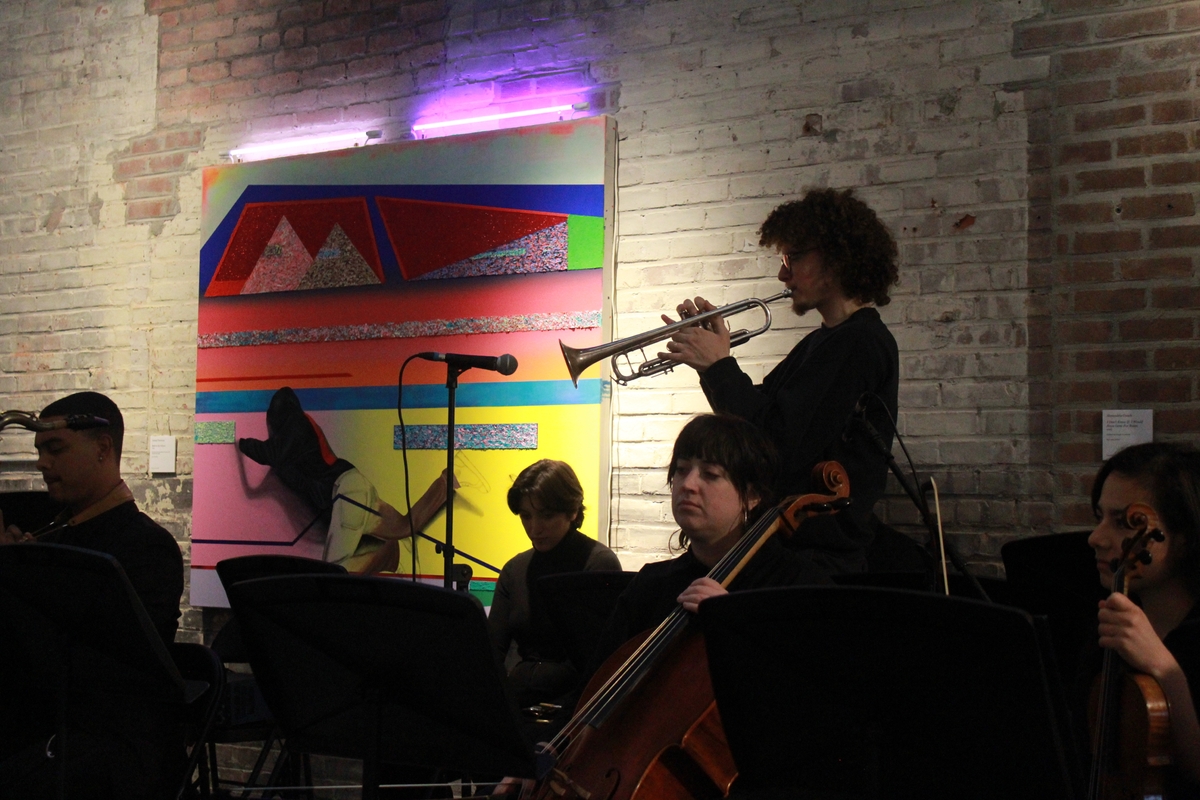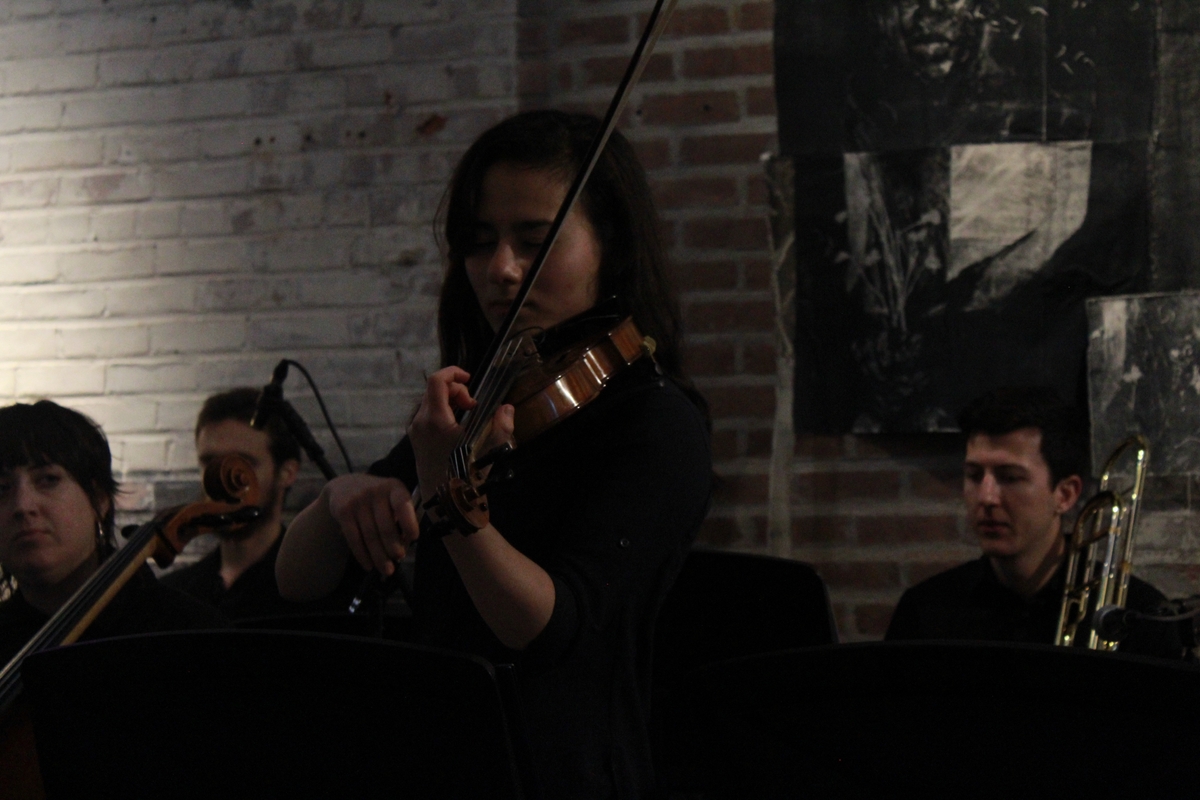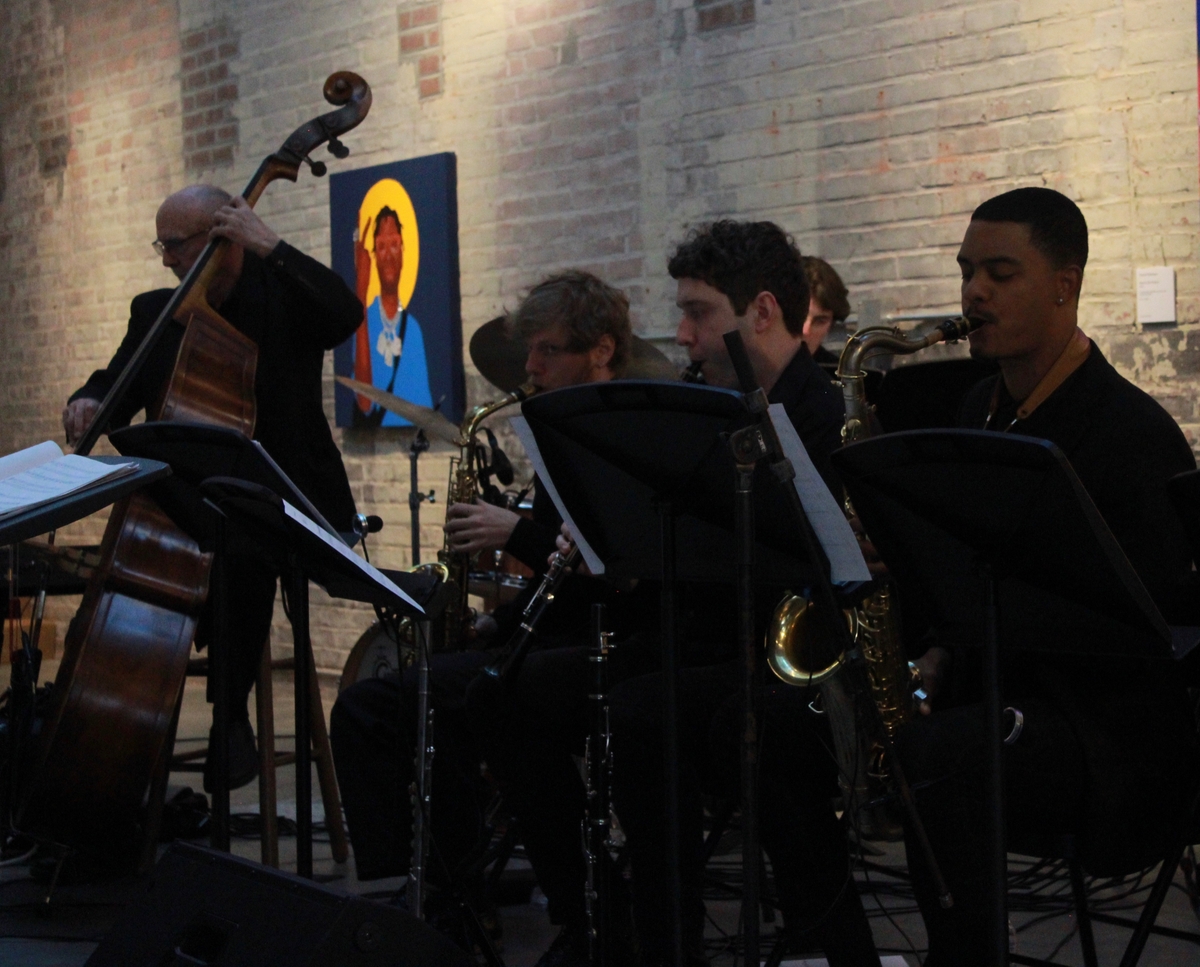
Brian Slattery photo
At the New Haven Composers Spotlight at NXTHVN.
Composer and violinist Alyssa Chetrick was taking a solo as part of her vertiginous piece, sardonically titled “Equilibrium.” If some of the previous passages had offered a sense of calm, Chetrick was now going for chaos, spurring the ensemble around her to join her. Her phrasing pushed the musicians around her to dig deeper into the music she’d written, as if they were looking to break it. Would they?

Lewis.
Chetrick’s composition was part of the inaugural New Haven Composers Spotlight, held Saturday afternoon at NXTHVN on Henry Street in Dixwell and, as stated on its website, “dedicated to advancing artistic visions and stories specific to New Haven through the commissioning of three works by diverse and emerging local composers.” Organized by musician Wes Lewis, the event — sponsored by the Mellon Foundation and the Arts Council of Greater New Haven — began with an open call for composers in January, with three chosen by a committee. In March and April, the composers and musicians met to prepare each piece, culminating in Saturday’s performance for a full crowd of enthusiastic listeners.
Lewis, who is also getting a PhD from Yale in computational biology and bioinformatics, said the idea for the Composers Spotlight came about through the “confluence” of two events. The first was a visit by the Mingus Big Band to Woolsey Hall to perform Mingus’s mammoth work Epitaph. Lewis was one of a few Yale students who played with them. “There was so much funding,” he said; a private donor had secured the support to pay the musicians and play at Woolsey, and “brought a lot of people out from the community.”
Afterward, he participated in other performances where composers without that kind of support wanted to perform larger scale works but had to make musical sacrifices — say, substituting a real string section with an electronic string section — due to lack of funds.
“It felt like such a huge discrepancy,” he said. “There were no similar resources. There was no pulling together of the community.”
Lewis decided to do something about that — to secure the support for a larger ensemble, for composers to more fully realize their musical ideas. He wrote grants and reached out to NXTHVN after playing concerts there in the past. He put together an ensemble of musicians who could play classical music and jazz, many of them multi-instrumentalists. And he found the composers he was looking for in Alyssa Chetrick, Benjamin Webster, and Tyler Goldchain.

Alyssa Chetrick.
Chetrick’s “Equilibrium,” she said, was a play on the term “market equilibrium,” which appeared too often to call to balance supply and demand in simple economic terms without attending to social and environmental costs. The piece, Chetrick said, was hopefully a chance for the audience to reflect on the costs of their own decisions.
The piece launched fast into a swinging waltz with an angular melody; subsequent shifts in meter created a woozy sense of things coming apart, shaking at their foundations. Trumpet and clarinet solos felt like voices finding their way through the instability, but Chetrick herself turned that on its head. Just as it seemed the music could be pushed no further, it broke for a moment of solace — before a final crash.
“Wasn’t that cool?” Moore said, after the heavy applause subsided.

Benjamin Webster explained that the inspiration for his piece began with field recordings he collected in New Haven, of everything from bird songs to traffic noise. “The sounds of New Haven are embedded in the musical DNA of this piece,” he said. Bucking with classical tradition, he allowed people to clap between the three movements of his piece if they so desired. It turned out they did.
The first movement began with an opening fanfare, calls from woodwinds that echoed across the ensemble. They moved into sweeping phrases that sounded almost like a huge engine coming to life, reaching a crescendo and dwindling away. The second movement then burst out of the gate with an urgent velocity, then spun off into the air, unsettled but determined. Musical explosions from all over the ensemble were anchored by ominous rising notes in the lower register. Some very effective use of snapping pizzicato punctuated the movement’s middle section, which then headed into a repeated phrase that didn’t quite repeat, creating a sense of stuttering iteration. The third movement began with a plaintive solo violin joined by distant brass, creating a sense of cautious optimism rendered nearly pastoral by a flute. Alternating passages of long held notes grew more dense and insistent each time through, becoming almost lush. It ended on a feeling of weary calm.
Tyler Goldchain then took the stage without explanation, instead beginning to sing. “Oh, love: who do you answer to? / I’ve been trying so hard to talk to you.” The music, redolent of gospel but paired with searching, secular lyrics, was a heartfelt cry that grew into a chamber piece punctuated by lifts and stops, creating a promise of solace.
A second piece started with a simple chord progression that grew in complexity as saxophone, bass, clarinet, and flute rose out of it, each getting to have their say. The third piece then swayed on a groove reminiscent of Marvin Gaye. Soloists got their turns and took their time, culminating in a classic drum break during which Goldchain, then playing guitar, knitted his brow in appreciation. The audience’s wild applause showed its appreciation, too.
A question-and-answer period for the composers after the performance revealed that some in the audience had perhaps been inspired to try composing themselves. They asked for advice. “Go back to simplicity,” Goldchain said. “Make a little idea strong,” a concept Webster seconded. “Once you have that facility,” Chetrick added, “you can deconstruct it and play with the material.”
As the composers continued to talk about their craft, a parallel emerged between their musical work and the organizational work Lewis had done to create the event. Speaking of collaborating with the ensemble, Goldchain remarked that “I wanted folks to fill these empty spaces” he had intentionally left in his music, and was overjoyed when musicians did. Likewise, Chetrick said that “it’s important that we create these spaces for musicians to have the resources and time” to make the music they want to hear. As in the music itself, so in the work of practicing and performing it.




It was a gorgeous event! the compositions were stellar! Impressive gathering of beautiful musicians! I know the young Mr. Lewis is a scientist working on his PhD. but he is also a world class musician! And not for nothing I loved seeing the Sistah maestro conducting! Ohhh and, I did not know Tyler could SANG! WHOA! WOW!
The New Haven Composer Spotlight must continue! what a gem! I'd buy all their compositions on vinyl!